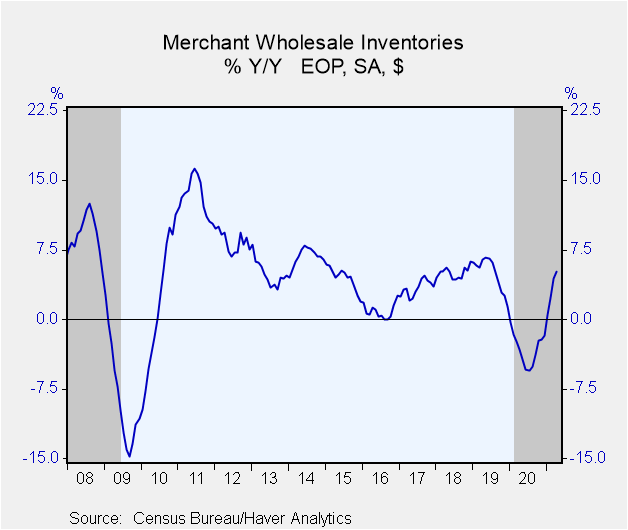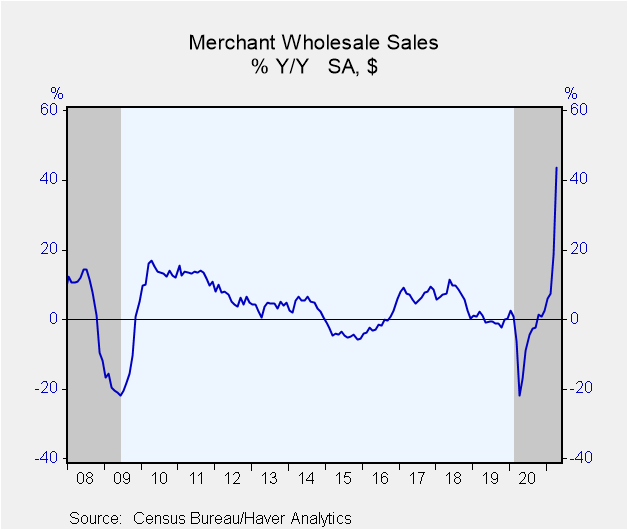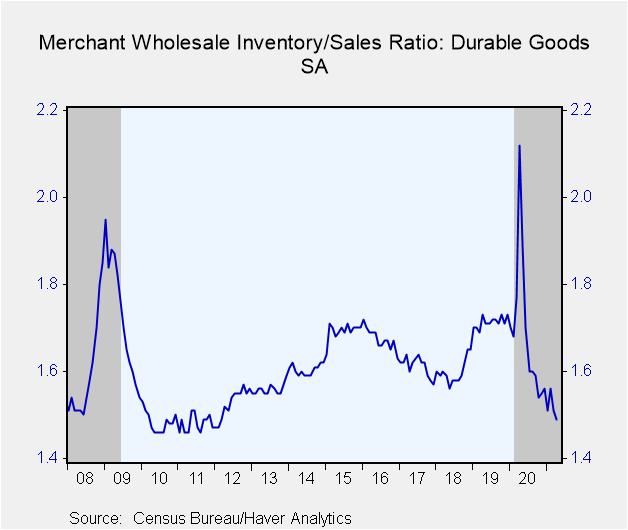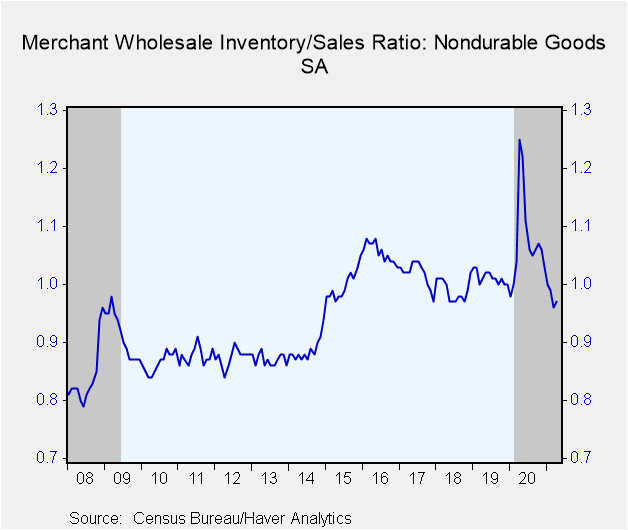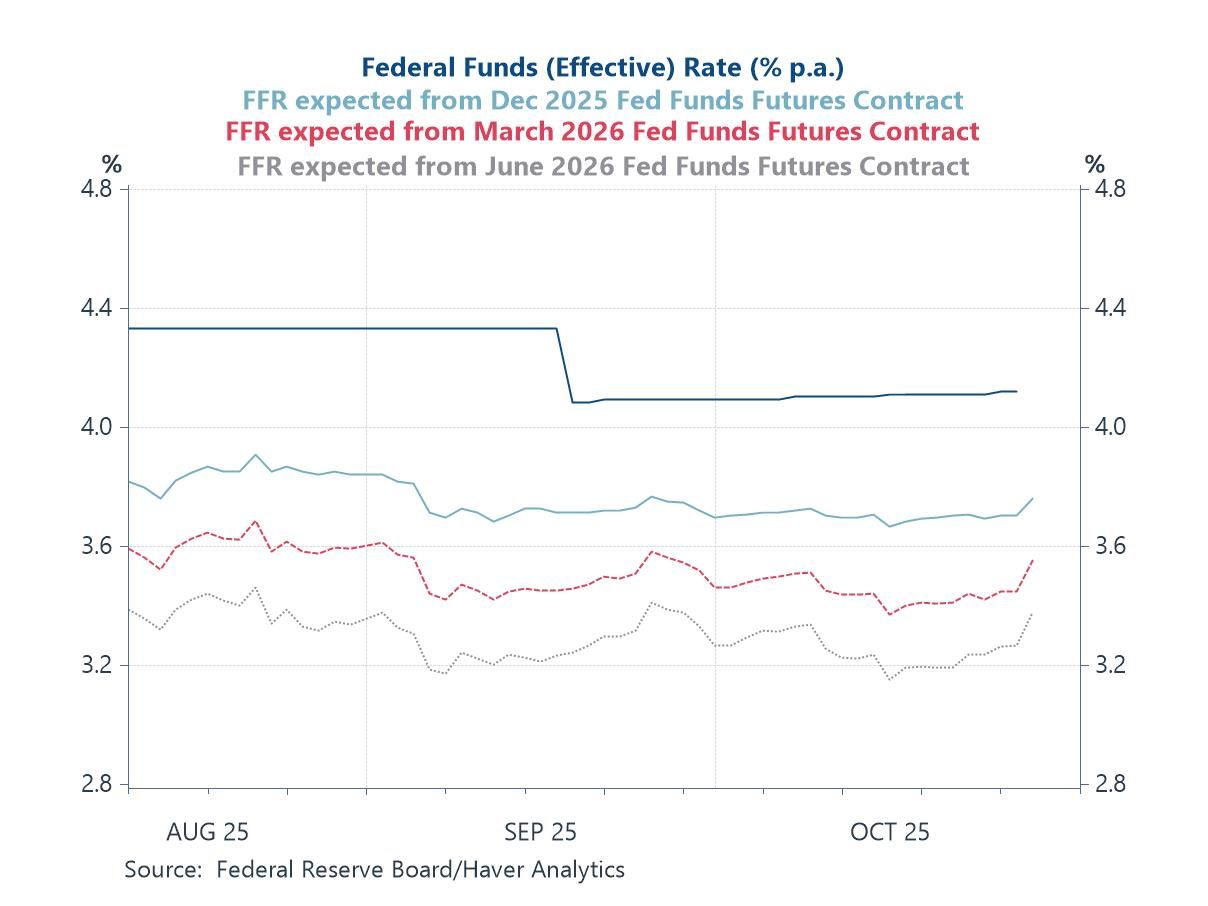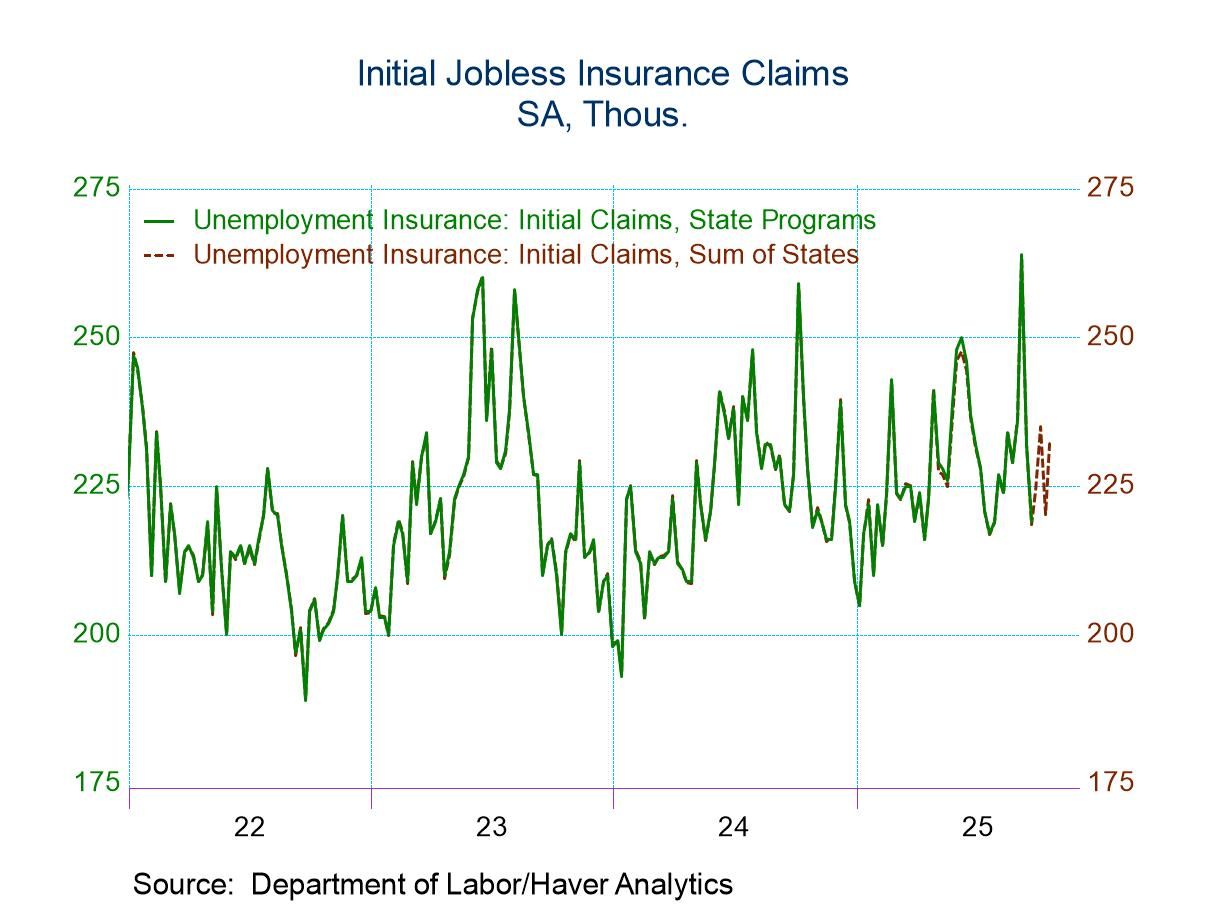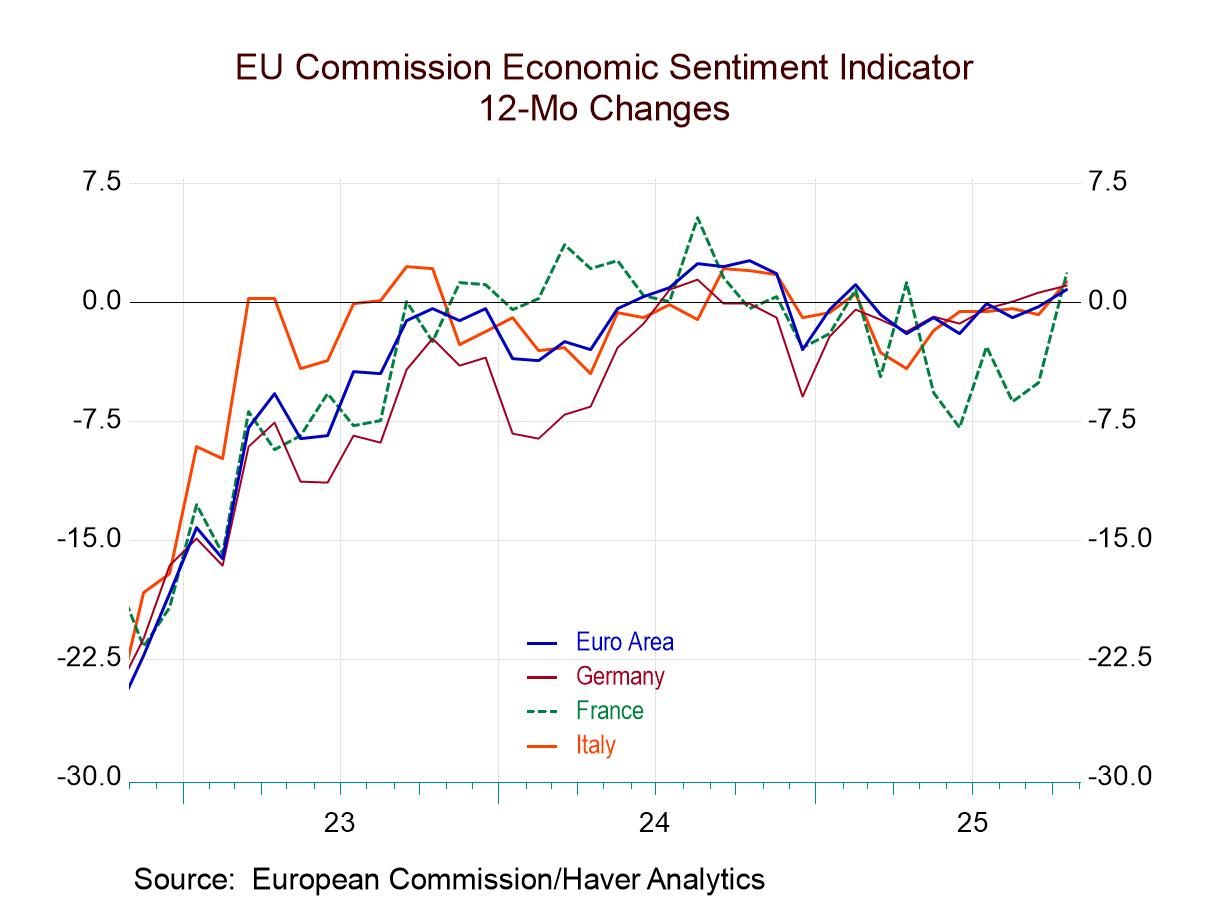 Global| Jun 09 2021
Global| Jun 09 2021U.S. Wholesale Sales and Inventories Rise in Tandem During April
by:Tom Moeller
|in:Economy in Brief
Summary
• Strength in inventories is broad-based. • Sales improvement follows March surge. • I/S ratio holds steady. Wholesale inventories increased 0.8% during April (5.2% y/y) following a 1.2% March increase, revised from 1.3%. The latest [...]
• Strength in inventories is broad-based.
• Sales improvement follows March surge.
• I/S ratio holds steady.
Wholesale inventories increased 0.8% during April (5.2% y/y) following a 1.2% March increase, revised from 1.3%. The latest increase matched expectations in the Informa Global Markets Survey.
Durable goods inventories rose 0.7% (1.8% y/y) following a 1.0% March gain, revised from 1.3%. A 2.6% rise (8.7% y/y) in furniture & home furnishings led the increase, the third consecutive month of strong gain. It was followed by a 1.8% rise (1.3% y/y) in metals, the fourth straight month of strength. A 1.4% rise (23.1% y/y) in lumber & other construction materials followed a 2.5% increase and motor vehicle inventories rose 0.8% (-3.3% y/y) after a 0.6% March gain. Electrical equipment inventories rose 0.7% (4.5% y/y), about as they did the month earlier. To the downside, computer inventories fell 1.1% (+8.6% y/y) after improving 3.4% in each of the prior two months. Nondurables inventories rose 0.9% (10.4% y/y) in April after three straight monthly increases which averaged 1.4%. A 10.1% rise (55.8% y/y) in farm product inventories led the gain after rising 0.8% in March. Grocery inventories rose 2.1% (5.7% y/y) following a 1.2% increase. The value of chemical inventories improved 2.1% (2.5% y/y), the same as in March. To the downside were apparel inventories which declined 4.4% (-16.6% y/y) and petroleum inventories fell 2.3% (+63.3% y/y) on the heels of three months of strong increase.
Wholesale sales similarly rose 0.8% (43.6% y/y) after a 4.3% March jump, revised from 4.6%. A 2.0% increase was anticipated in the Action Economics Forecast Survey.
Durable goods sales increased 2.1% (44.9% y/y) in April following a 4.1% March jump. Metals sales surged 5.6% (78.4% y/y) after a 10.4% rise as prices strengthened. Electrical equipment purchases gained 3.6% (26.8% y/y) after 1.2% improvement in March. Lumber sales improved 3.2% (64.0% y/y) after surging 9.3%. Auto sales rose 1.2% (87.9% y/y) following a 5.6% jump but furniture sales declined 1.4% (+62.4% y/y) after rising 7.7% in March. Nondurable goods sales eased 0.3% (+42.4% y/y) after a 4.5% rise. A 6.3% jump (191.1% y/y) in apparel sales followed a 12.6% surge. Chemical sales improved 1.3% (36.0% y/y) following a 7.2% strengthening while petroleum sales eased 4.8% (+141.6% y/y). Farm product sales slipped 0.2% (+39.2% y/y) after a 3.5% jump.
With the rise in inventories keeping pace with the sales gain, the inventory-to-sales ratio held steady at 1.22 in April. It remained the lowest since September 2014 and was below the record of 1.66 set in April 2020. The durable goods I/S ratio eased to 1.49 in April, the lowest level since early-2012, while the nondurable goods I/S ratio edged up to 0.97 in April, but remained at its lowest since October 2018.
The wholesale trade figures are available in Haver's USECON database. The expectations figure for inventories is contained in the MMSAMER database. Expectations for sales are in the AS1REPNA database.
| Wholesale Sector - NAICS Classification (%) | Apr | Mar | Feb | Apr Y/Y | 2020 | 2019 | 2018 |
|---|---|---|---|---|---|---|---|
| Inventories | 0.8 | 1.2 | 1.0 | 5.2 | -1.7 | 1.4 | 6.2 |
| Sales | 0.8 | 4.3 | -0.0 | 43.6 | -4.7 | -0.2 | 6.7 |
| I/S Ratio | 1.22 | 1.22 | 1.26 | 1.67 (Apr '20) | 1.38 | 1.35 | 1.28 |
Tom Moeller
AuthorMore in Author Profile »Prior to joining Haver Analytics in 2000, Mr. Moeller worked as the Economist at Chancellor Capital Management from 1985 to 1999. There, he developed comprehensive economic forecasts and interpreted economic data for equity and fixed income portfolio managers. Also at Chancellor, Mr. Moeller worked as an equity analyst and was responsible for researching and rating companies in the economically sensitive automobile and housing industries for investment in Chancellor’s equity portfolio. Prior to joining Chancellor, Mr. Moeller was an Economist at Citibank from 1979 to 1984. He also analyzed pricing behavior in the metals industry for the Council on Wage and Price Stability in Washington, D.C. In 1999, Mr. Moeller received the award for most accurate forecast from the Forecasters' Club of New York. From 1990 to 1992 he was President of the New York Association for Business Economists. Mr. Moeller earned an M.B.A. in Finance from Fordham University, where he graduated in 1987. He holds a Bachelor of Arts in Economics from George Washington University.


